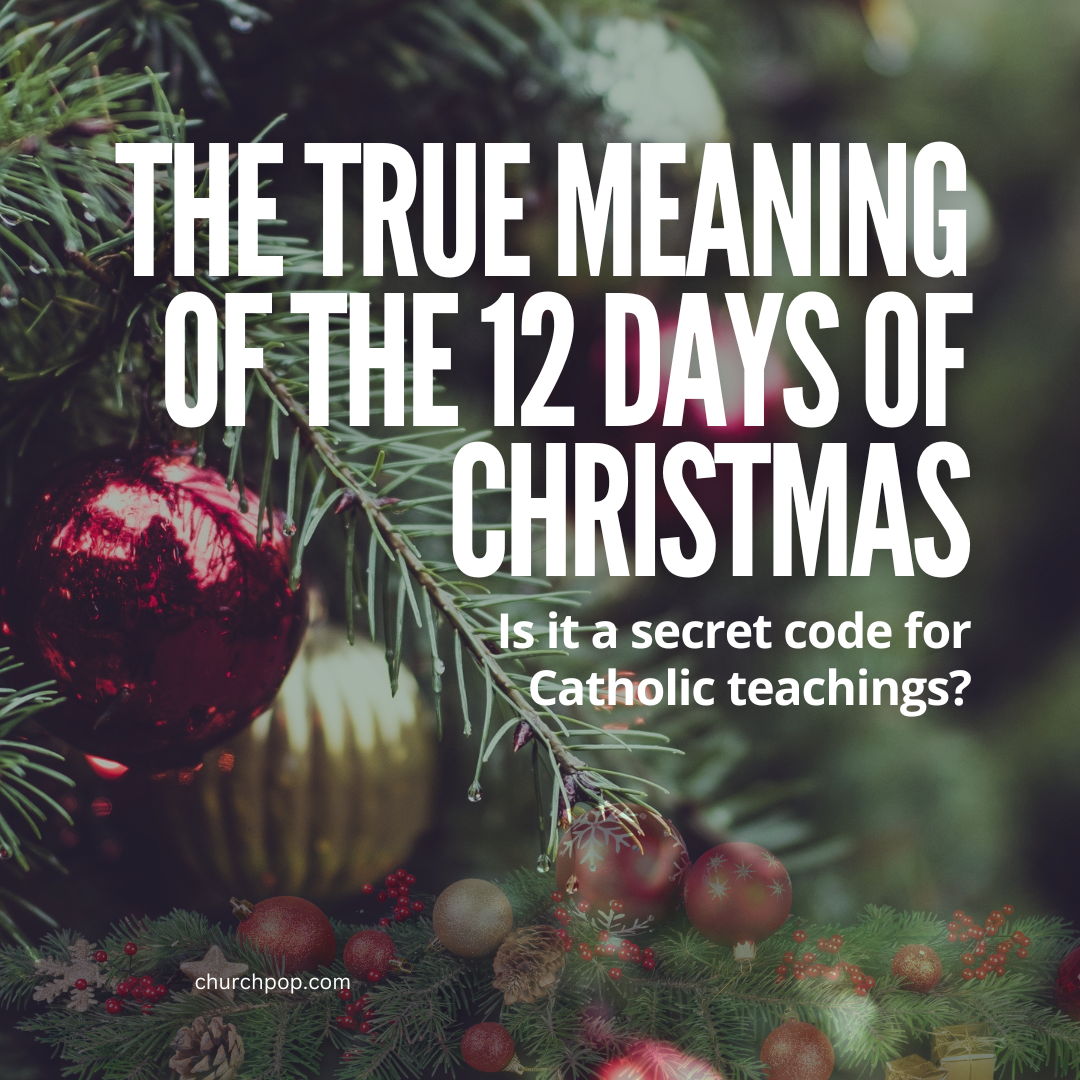It’s a common claim among Catholics that the English Christmas carol “The Twelve Days of Christmas” is a secret code for Catholic teachings used when Catholicism was illegal in England.
Since Catholicism was illegal in England from the 16th to the 19th centuries, tradition holds that the song was a mini-catechism to help teach the faith secretly to Catholic children.
Here’s what the different gifts traditionally symbolize:

Partridge in a Pear Tree = Jesus Christ
2 Turtle Doves = The Old and New Testaments
3 French Hens = Faith, Hope and Charity, the Theological Virtues

4 Calling Birds = The Four Gospels and/or the Four Evangelists
5 Golden Rings = The Pentateuch, the first Five Books of the Old Testament
6 Geese A-laying = The six days of creation

7 Swans A-swimming = The seven gifts of the Holy Spirit
8 Maids A-milking = The eight beatitudes
9 Ladies Dancing = The nine Fruits of the Holy Spirit

10 Lords A-leaping = The ten commandments
11 Pipers Piping = The eleven faithful apostles
12 Drummers Drumming = The twelve points of doctrine in the Apostle’s Creed
Note that some versions of the theory have slightly different interpretations of the code.
Catholic News Agency explains,
“The 'True Love' one hears in the song is not a smitten boy or girlfriend but Jesus Christ, because truly Love was born on Christmas Day. The partridge in the pear tree also represents Him because that bird is willing to sacrifice its life if necessary to protect its young by feigning injury to draw away predators.”
Furthermore, different traditions were–and still are in some cases–associated with each of the 12 days of Christmas as shared by English Heritage.
This includes the celebration of popular feast days like Saint Stephen and Saint John, and of course, Childermas.
This catchy tune can remind the faithful today to slow down and embrace the fullness of the Christmas season.
Yes, as Catholics, the Nativity of Our Lord marks the beginning of the liturgical season. So, while secular society takes down the decor and moves on, we are called to continue the celebration!


